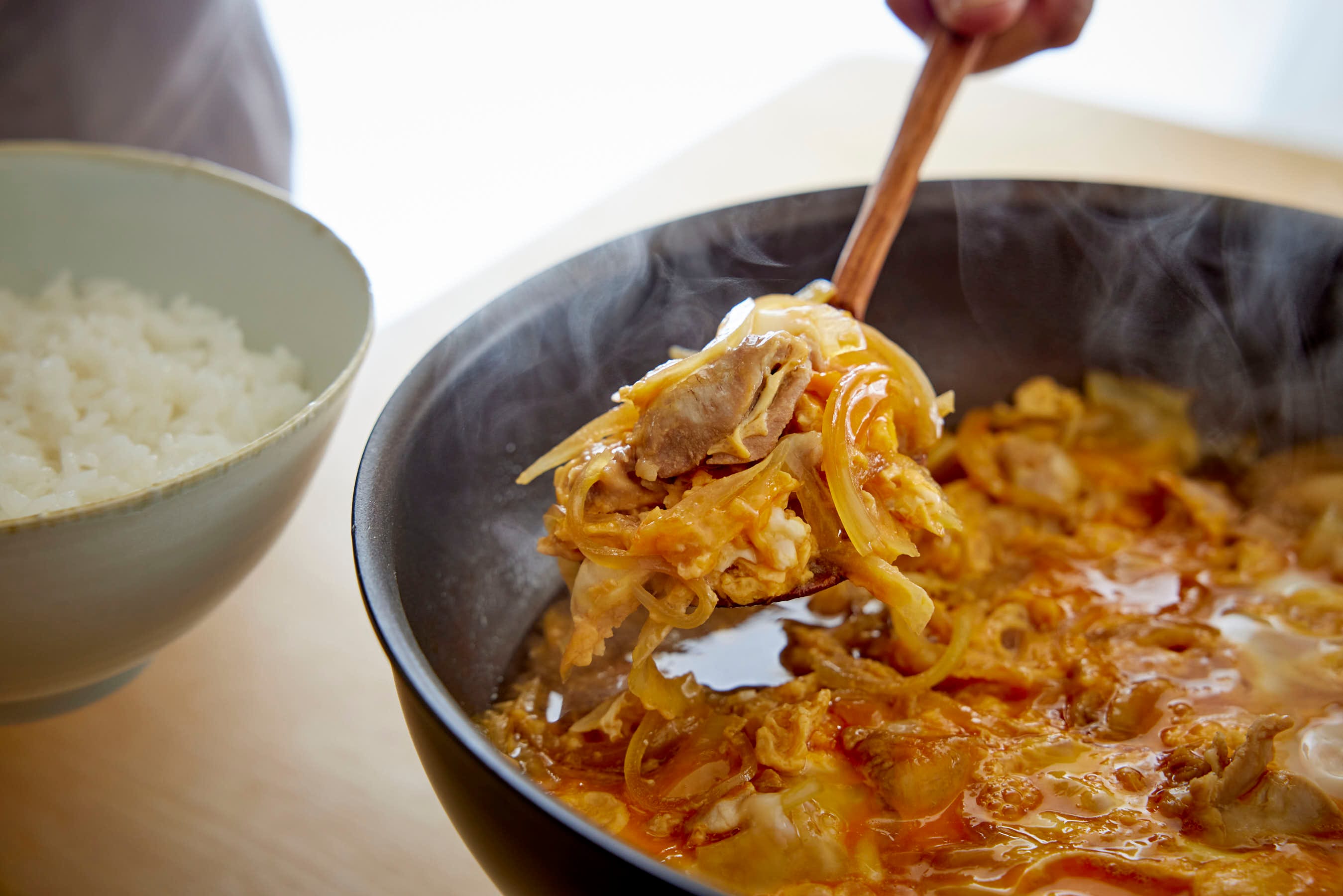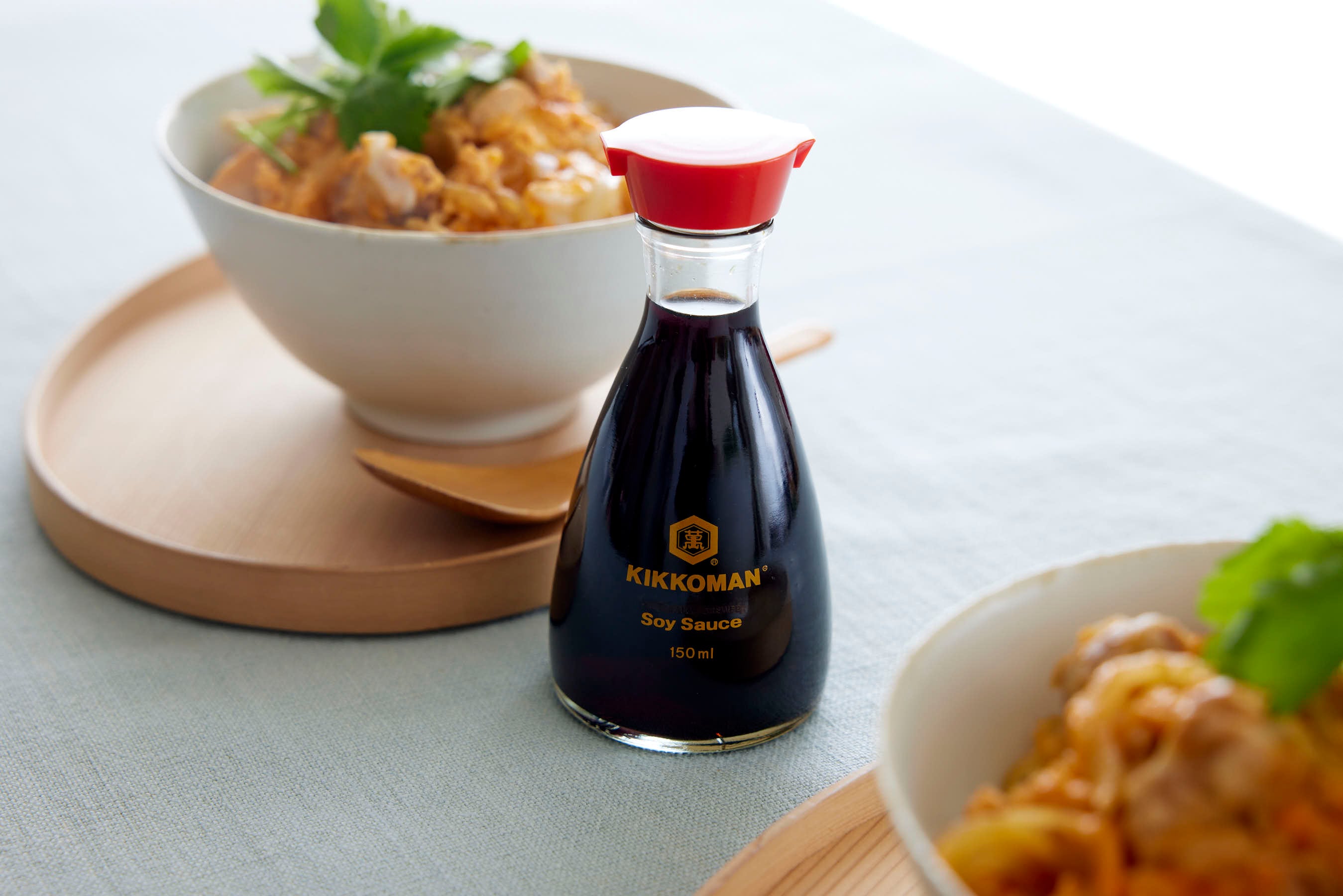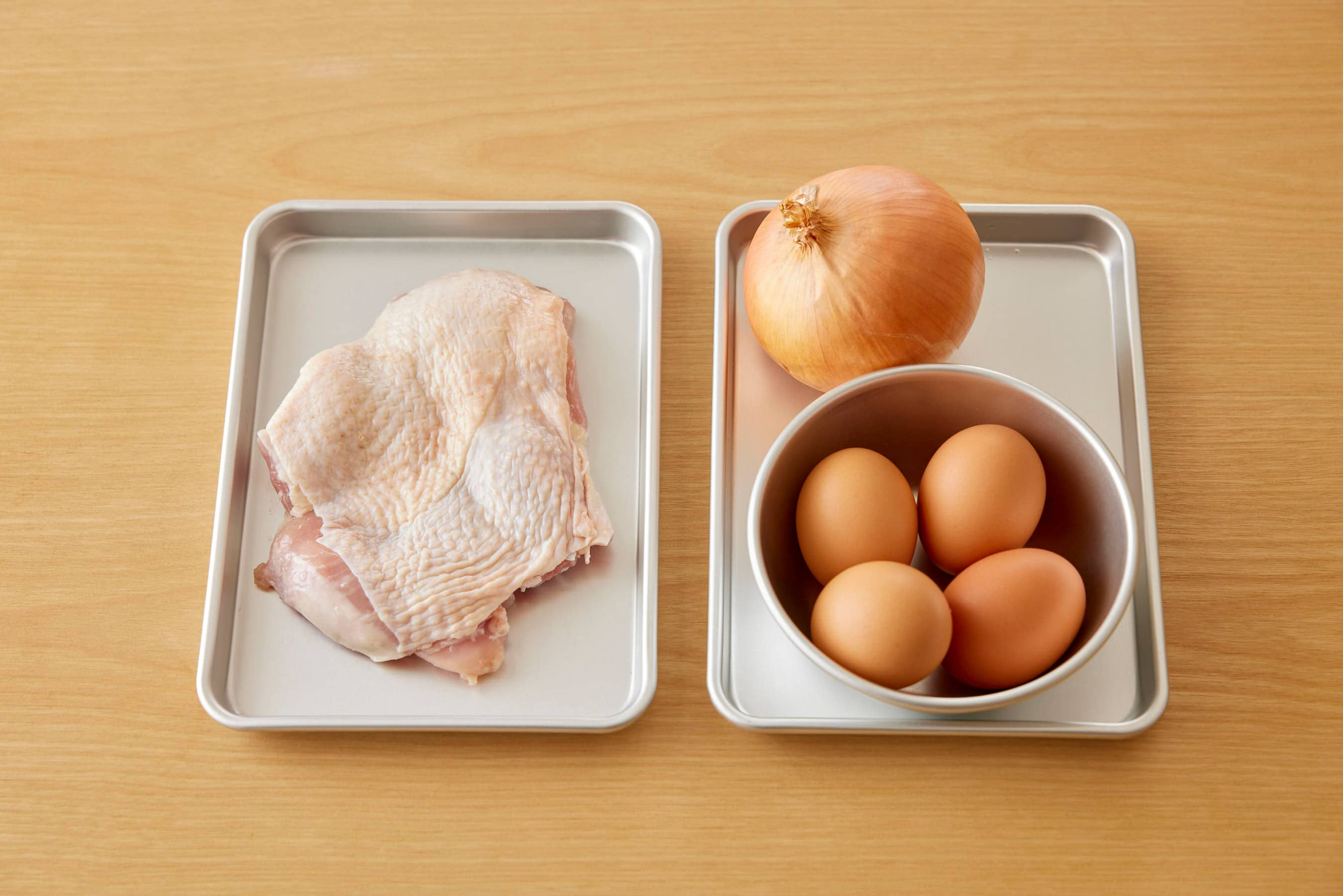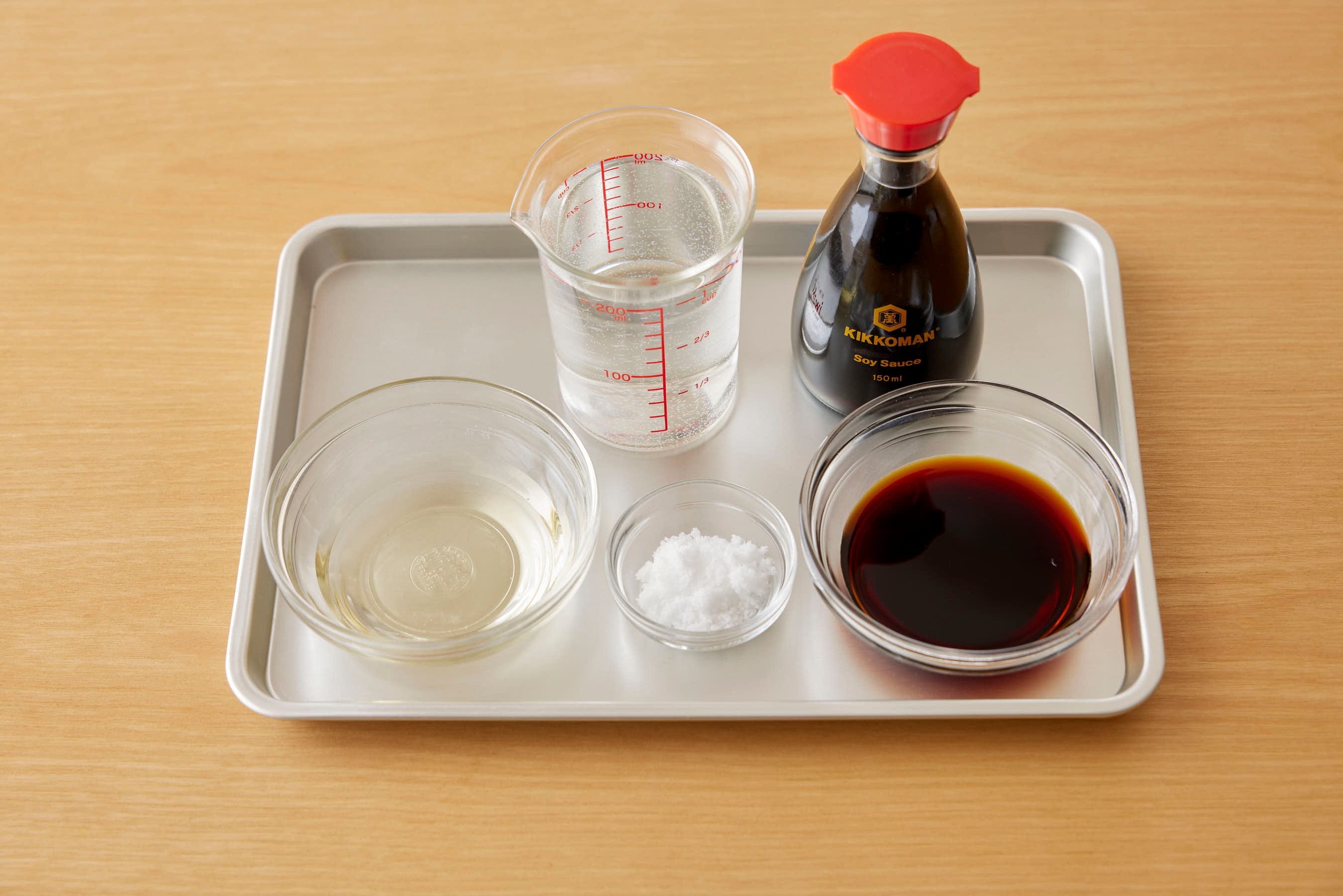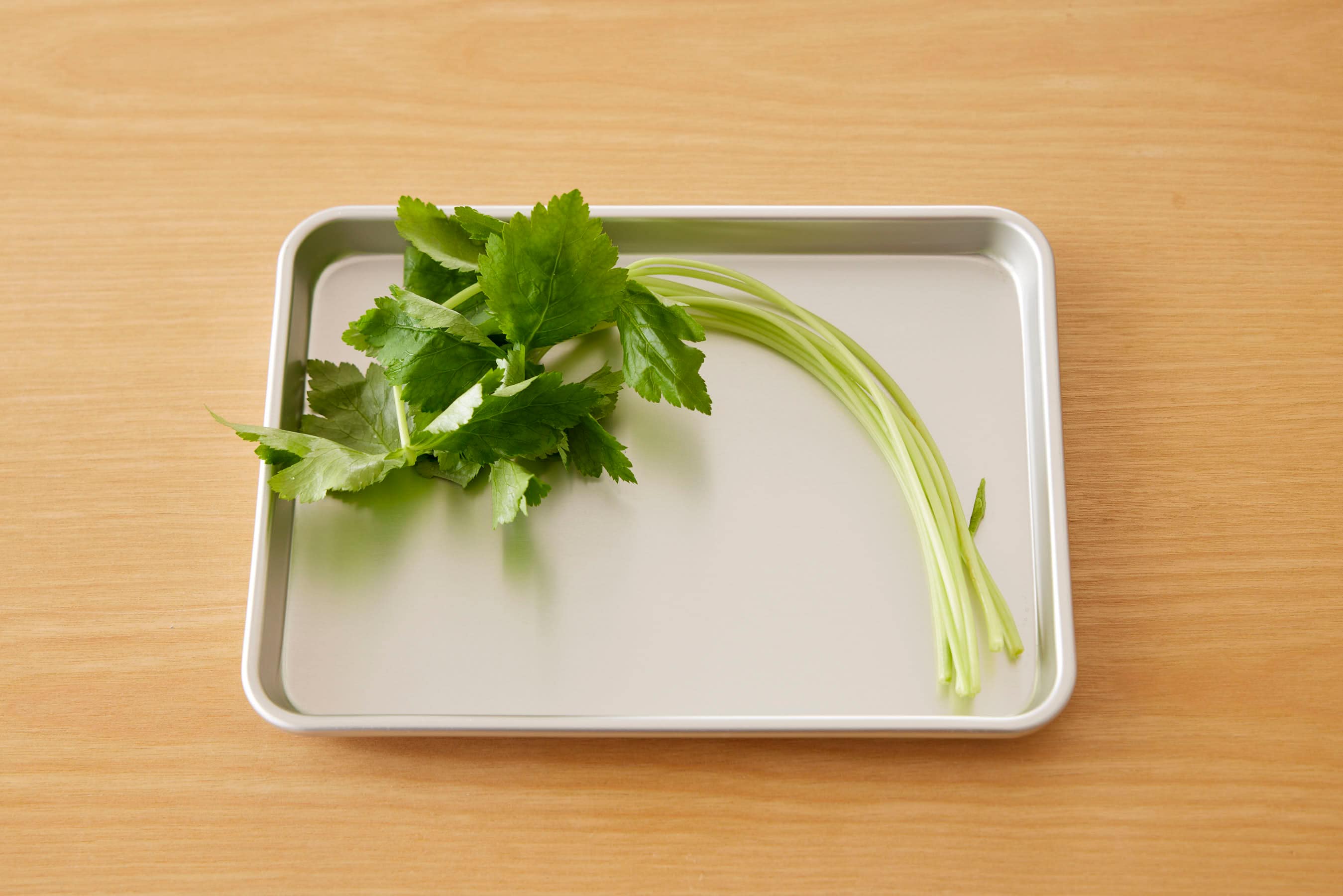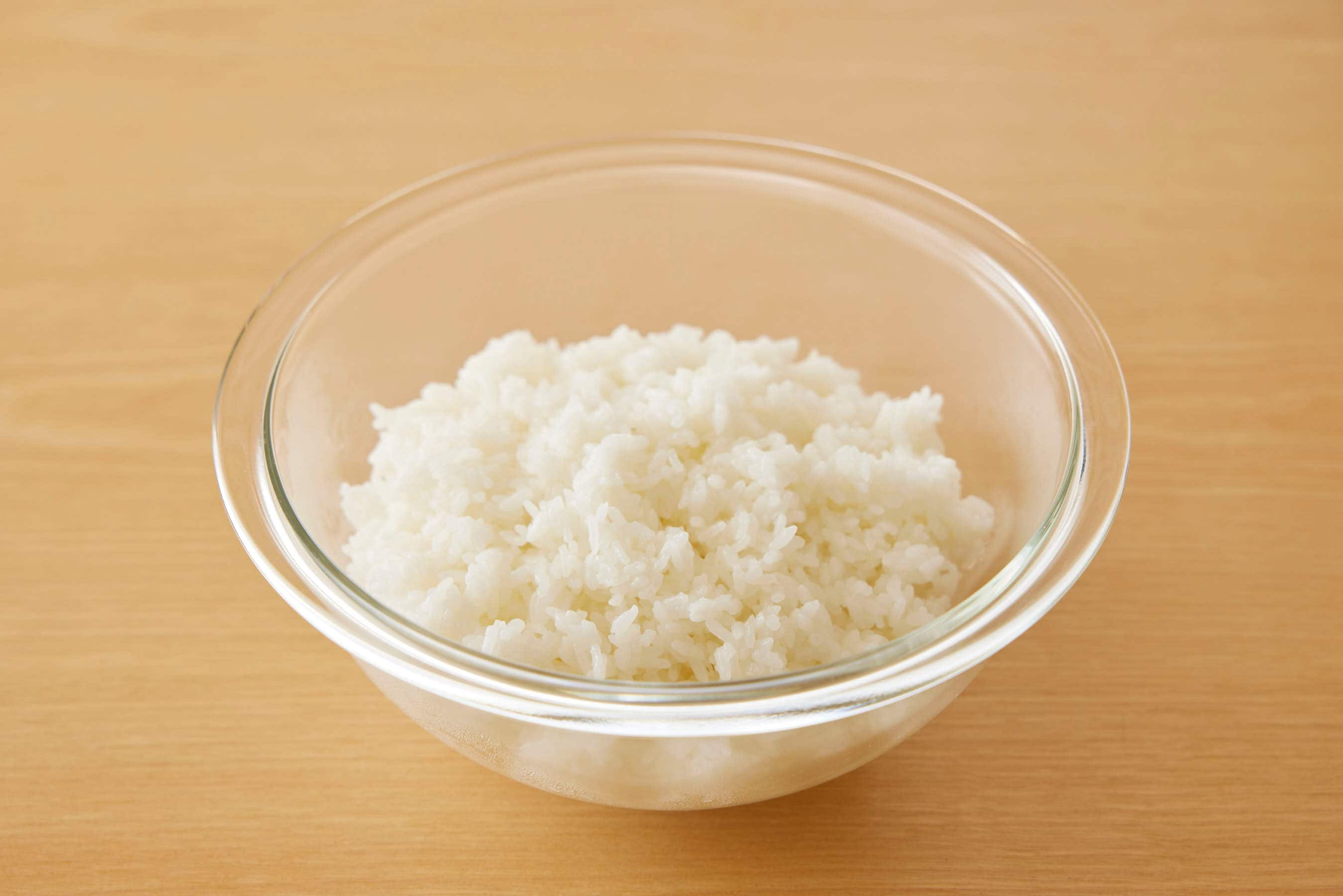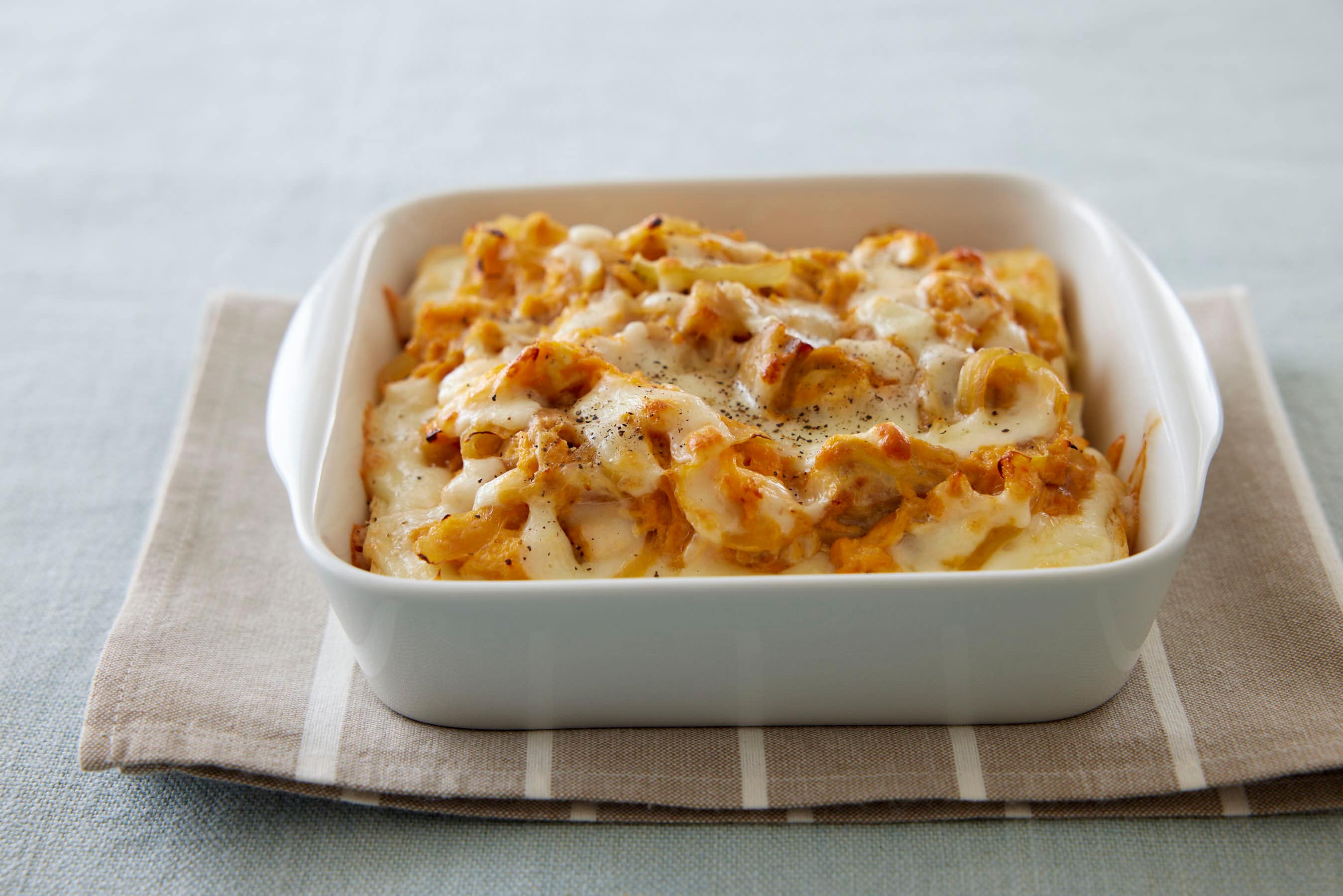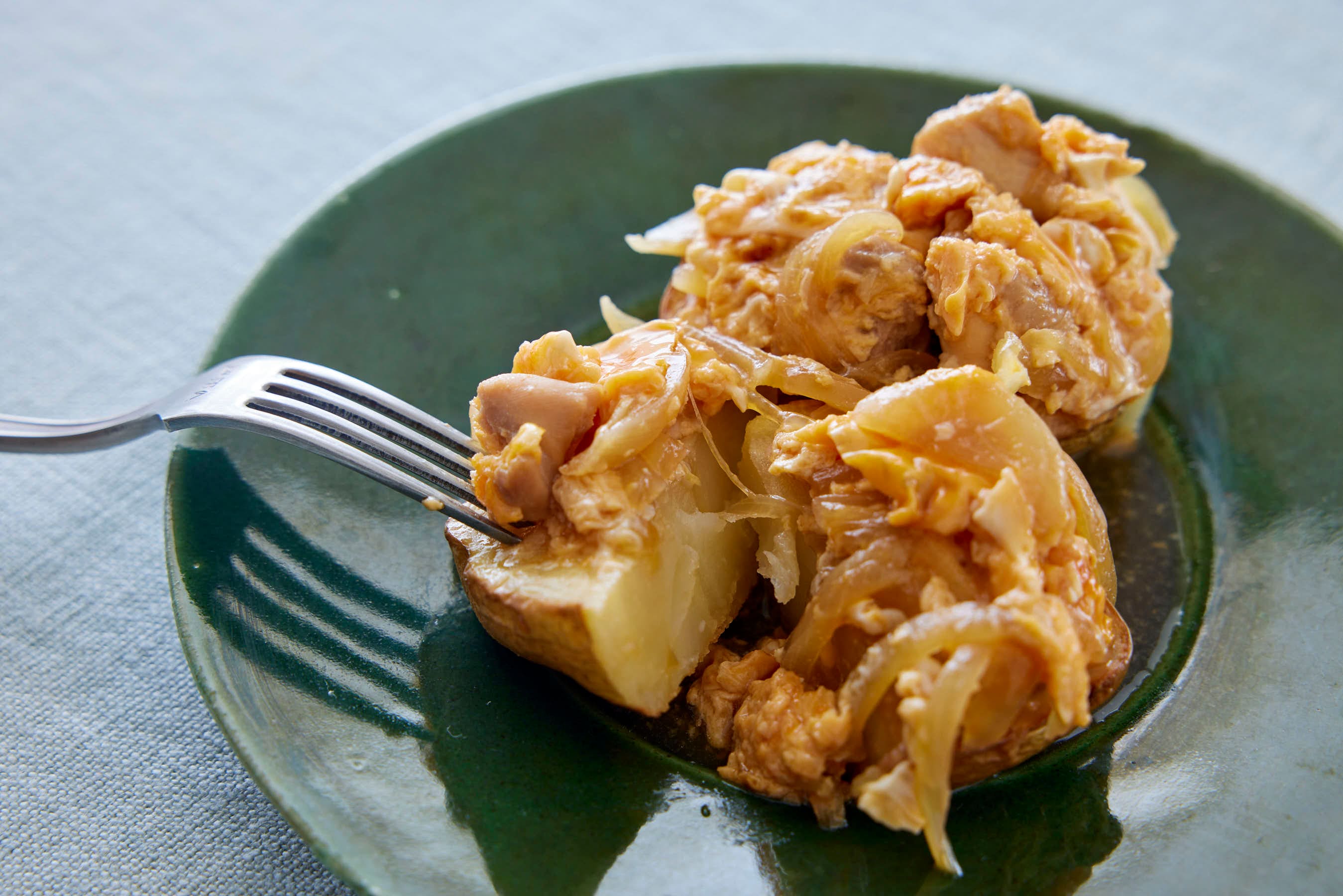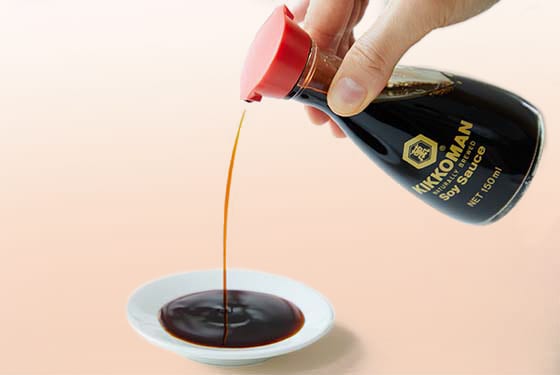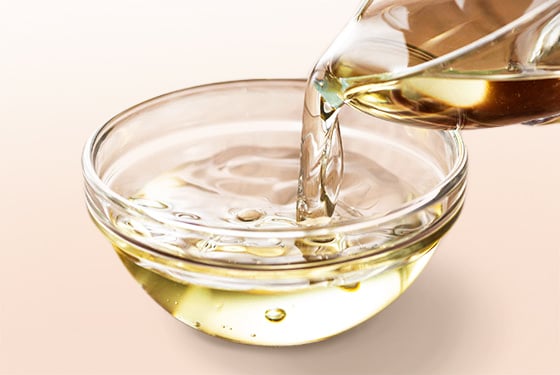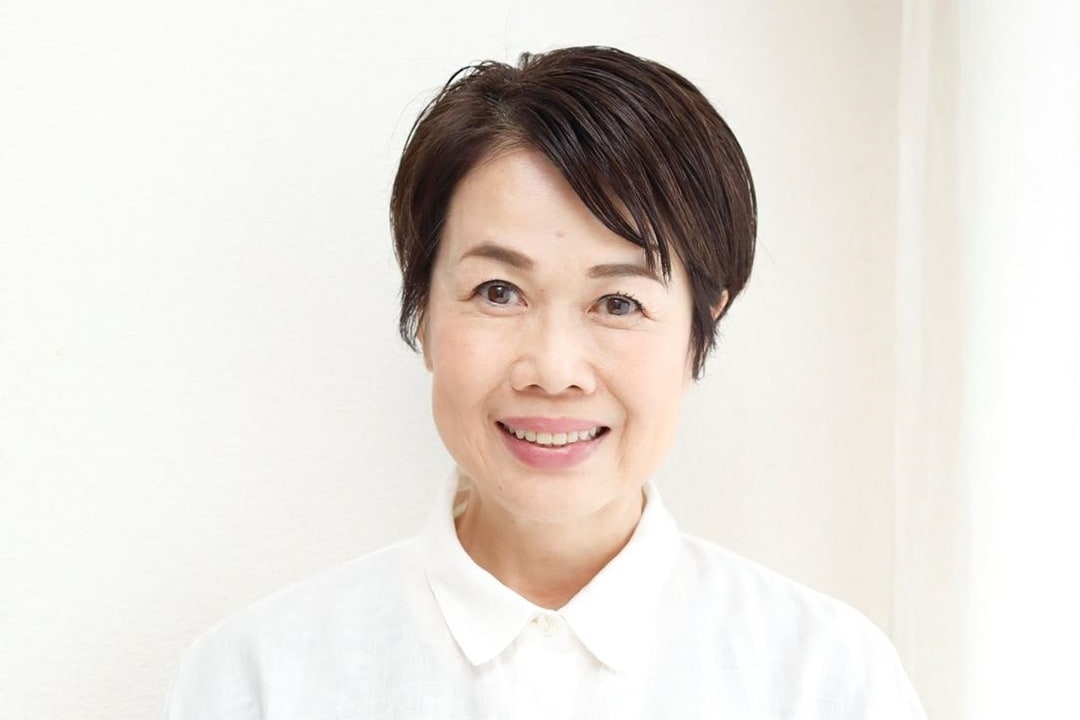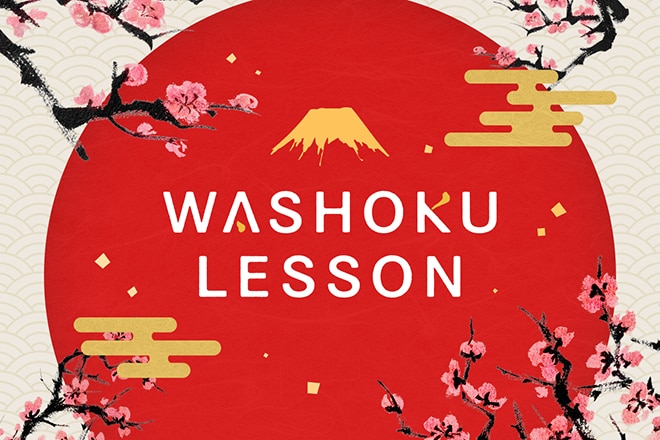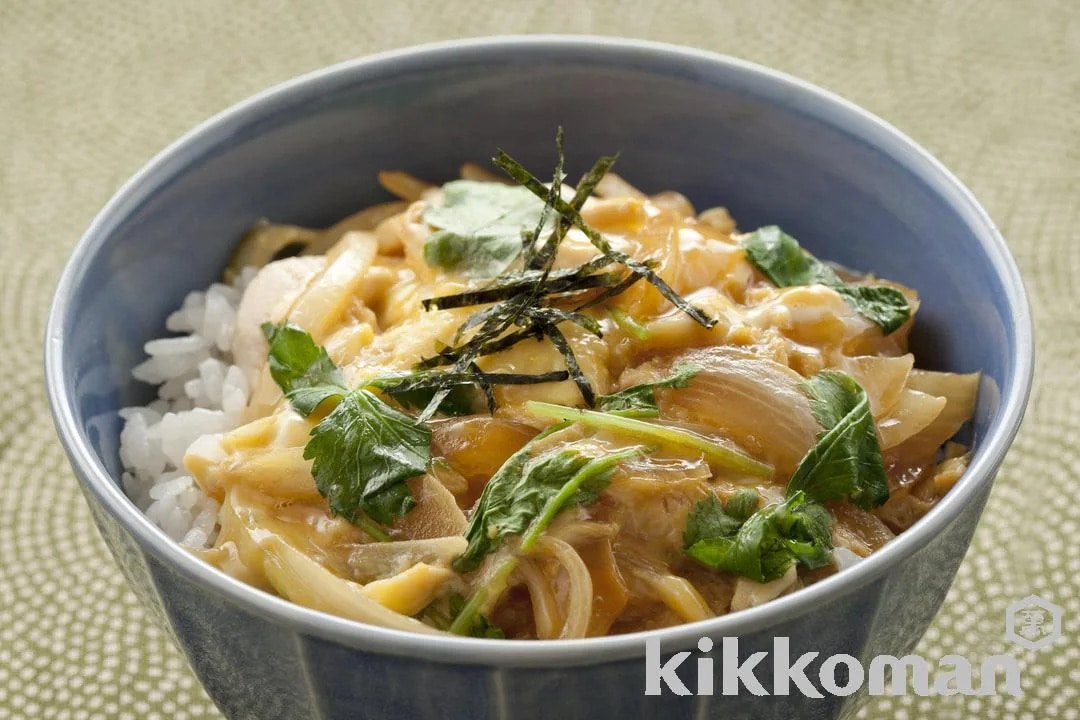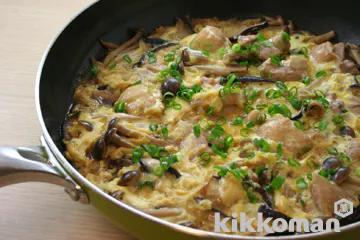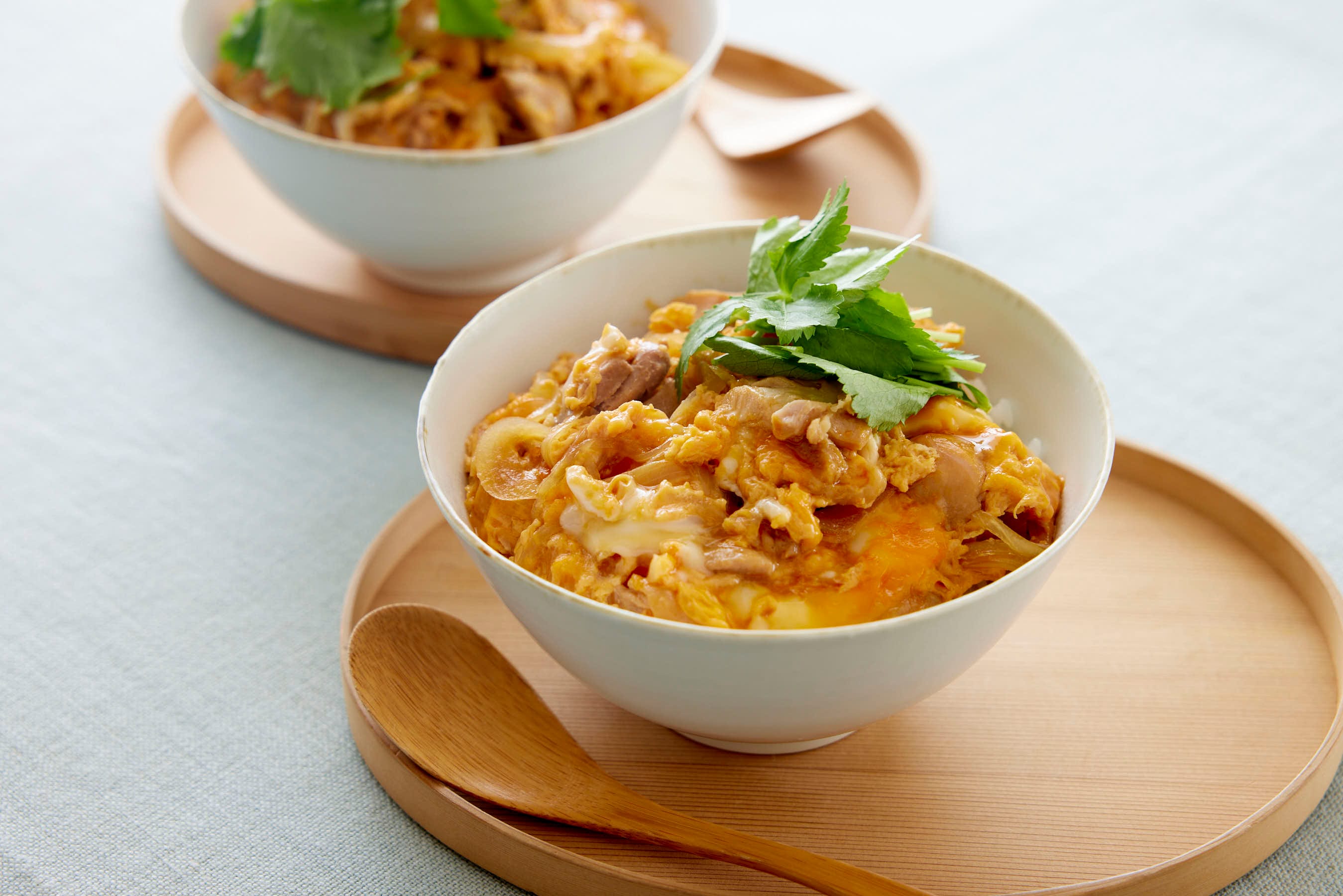
Chicken is simmered in a sweet soy-flavored soup and finished with beaten eggs. You can enjoy the savory flavor of the chicken along with the softness of the eggs. The rice soaked in the broth is delicious as well.
Table of Contents
- What is Oyakodon?
- The Secret to Delicious Flavor of Oyakodon
- Things to Remember When Making Oyakodon
- Ingredients
- Calories and Cooking Tame
- How to Prepare the Ingredients
- How to Simmer the Ingredients
- How to Bind the Ingredients with Egg
- How to Serve Oyakodon
- More Ways to Enjoy Oyakodon
- Kitchen Utensils Used in This Recipe
- Kikkoman Products Used in This Recipe
- About the Recipe Author
What is Oyakodon?
Dishes served over rice are called “donburi” in Japanese. In the dish introduced here, the topping is made with chicken and egg, which is why it’s called Oyakodon—“oyako” meaning “parent and child.” Because it's a quick and convenient meal, many fast-food restaurants in Japan serve donburi dishes, and Oyakodon is one of the most popular choices. Its appeal lies not only in its ease but also in the delicious combination of savory toppings and broth-soaked rice. The topping layer itself, without the rice, is also known as “Oyako-ni”.
The Secret to Delicious Flavor of Oyakodon
Things to Remember When Making Oyakodon
Add the Beaten Eggs in Two Stages
Once the ingredients have simmered, add the beaten eggs. This technique is called “tamago-toji” (egg binding). It brings the broth and ingredients together into an easy-to-eat form. By pouring in the eggs in two separate stages, you create both fully set portions and soft, half-cooked sections, adding variety to the texture and flavor.
Ingredients (servings: 3-4)
Kikkoman Soy Sauce - 3 Tbsp
Mirin - 3 Tbsp
Sugar - 1/2 Tbsp
Water - 200ml (6.8 fl oz.)
Warm cooked rice - as needed
Calories and Cooking Time

* Nutrition facts are for one serving.
** This recipe uses ingredients produced for raw or semi-cooked consumption. To safely enjoy home-cooked meals, please adhere to the guidelines provided by your local food safety administration for the procurement, storage, cooking and other preparation methods of food ingredients.
How to Prepare the Ingredients
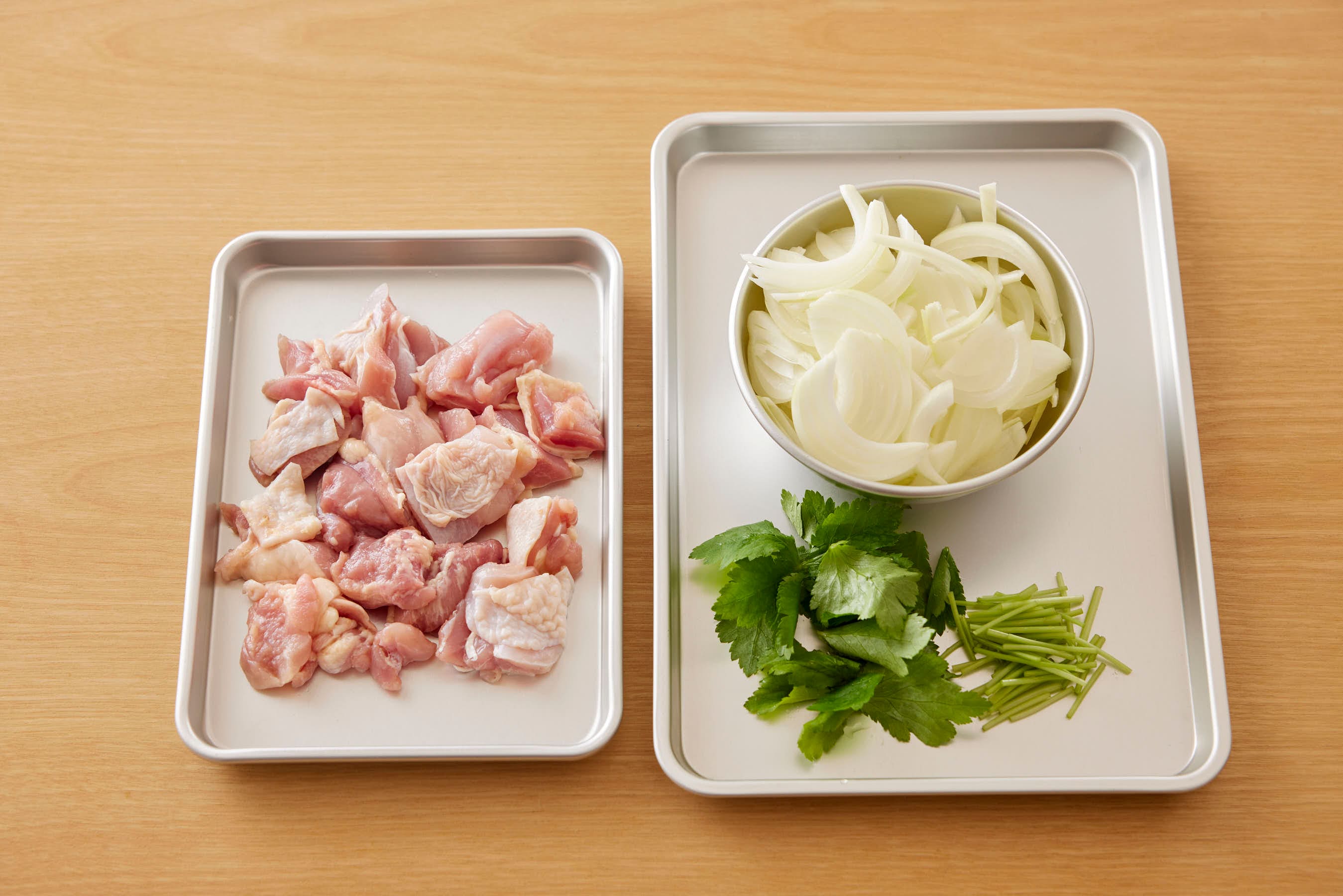
- 1Cut the onion in half lengthwise, remove the core, and cut into thin slices. Pluck the mitsuba leaves and cut the stems into 3 cm (1.2 in.) lengths. Cut the chicken into roughly 2 cm (0.8 in.) squares.
Watch video for preparing the ingredients
How to Simmer the Chicken and Onion
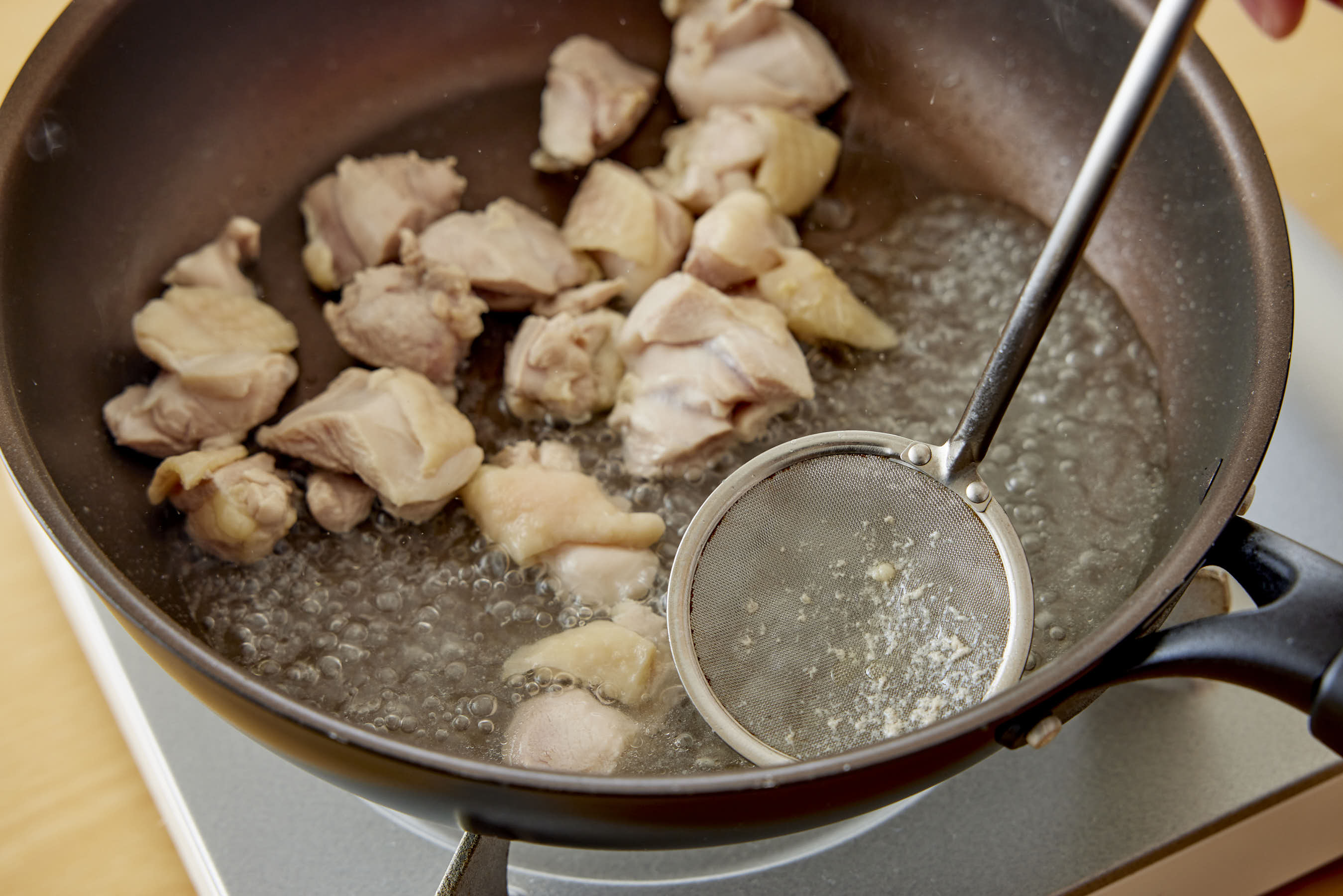
- 1Put the water and chicken into a fry pan and heat over medium. Stir briefly, and once it comes to a boil, skim off any scum with a mesh skimmer.
- TipsRemoving the scum from the chicken results in a clean, refined flavor.
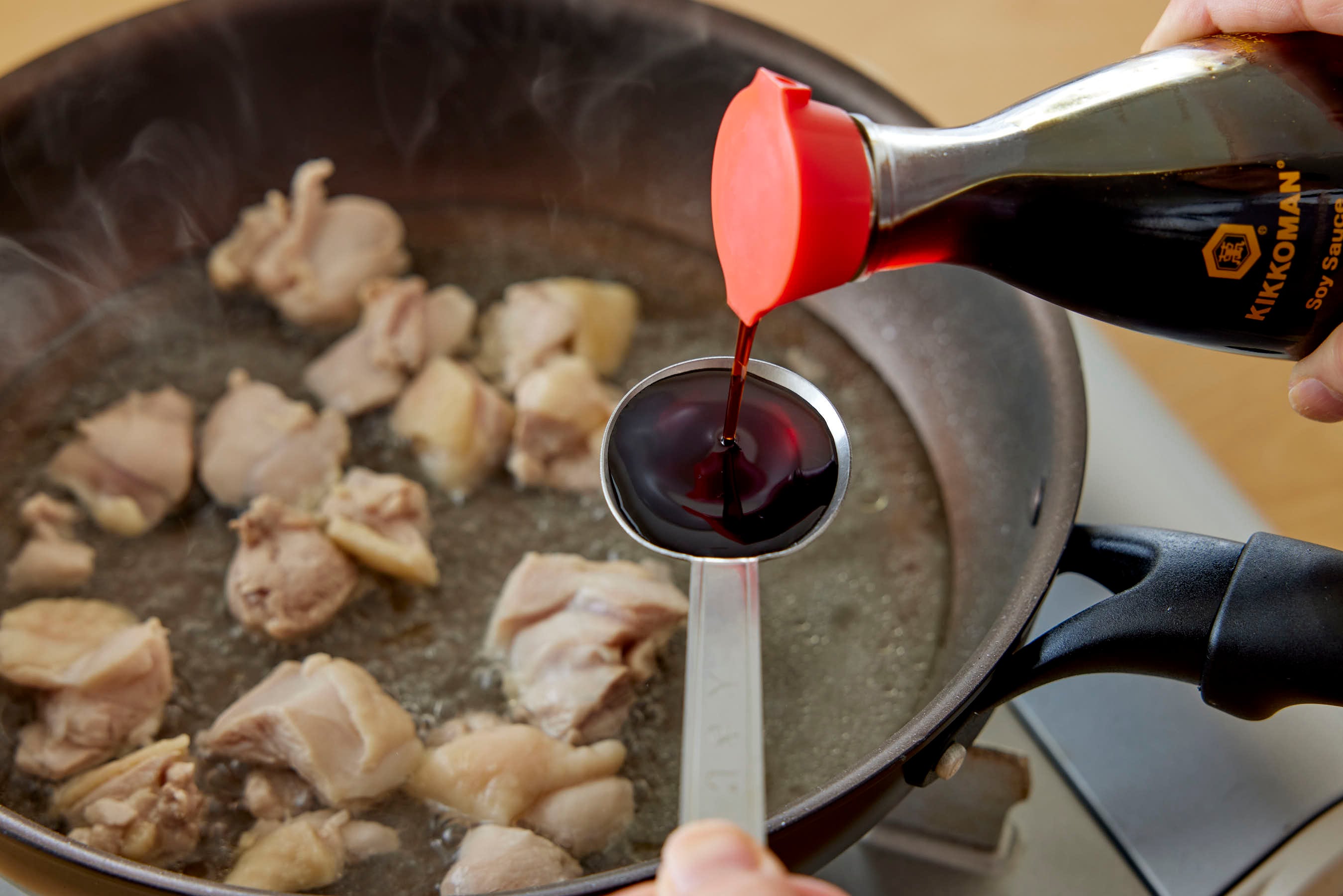
- 2Add mirin, sugar, and Kikkoman Soy Sauce to the pan.
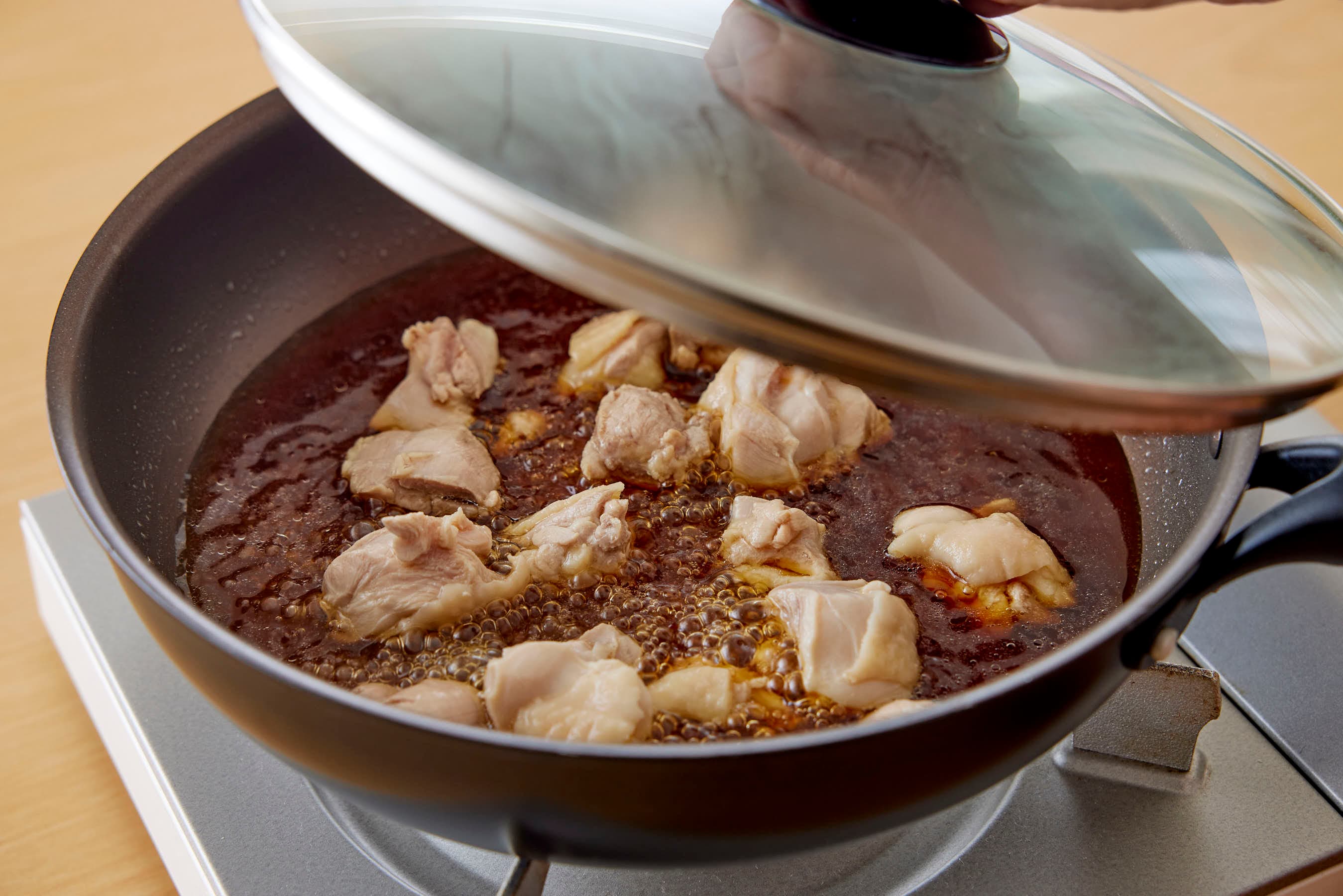
- 3Once it comes to a boil, cover with a lid, reduce to low heat, and simmer for 3 minutes.
- TipsCovering the pan helps cook the chicken through evenly and prevents the broth from evaporating.
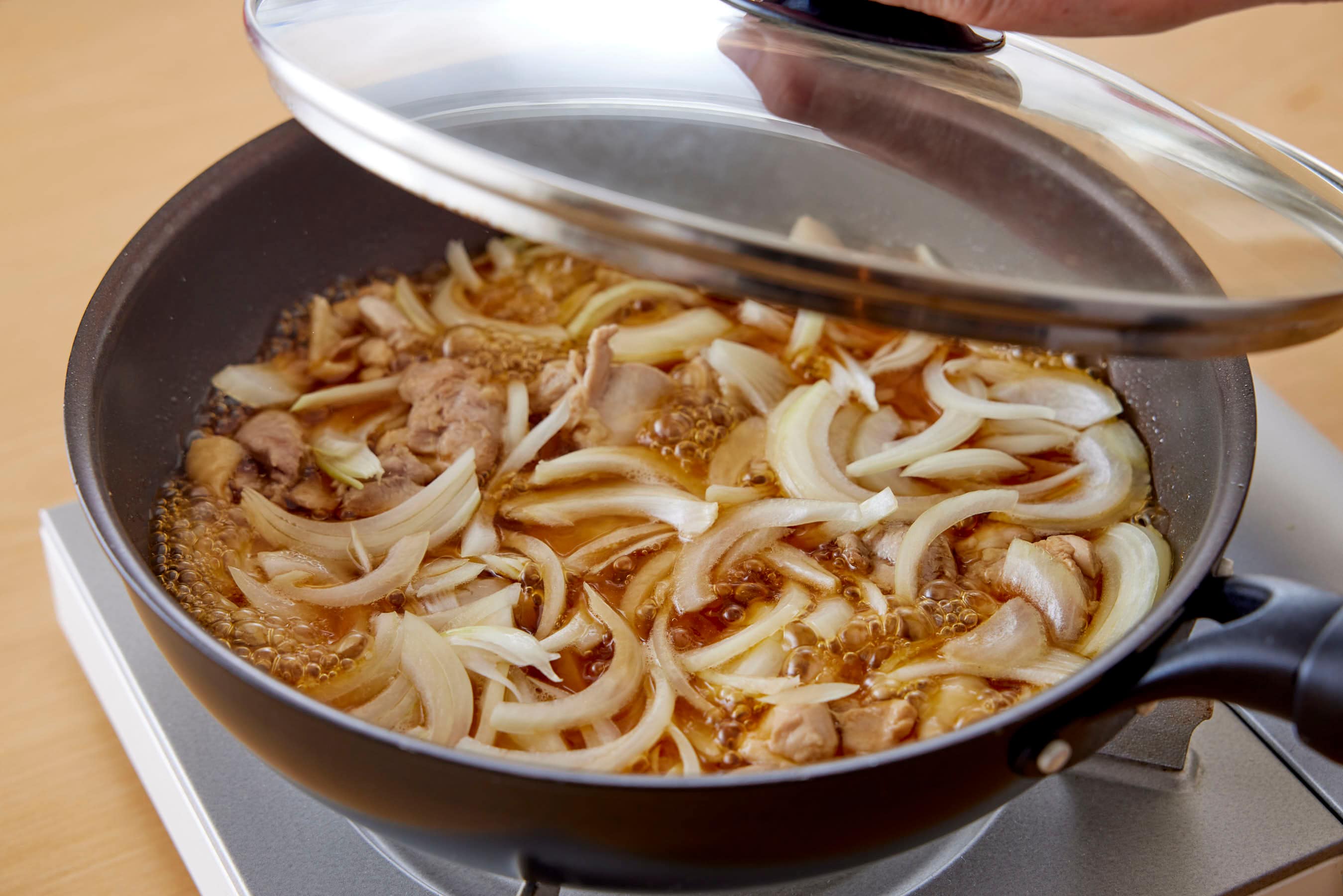
- 4Add the onion, and once it comes to a boil again, cover and simmer over low heat for another 3 minutes. While it’s simmering, scoop the rice into serving bowls.
- TipsSince you’ll want to place the Oyako-ni over the rice right after it’s done cooking, it’s best to prepare the rice while the topping is simmering.
Watch video for simmering the chicken and onion
Bind the Ingredients with Egg
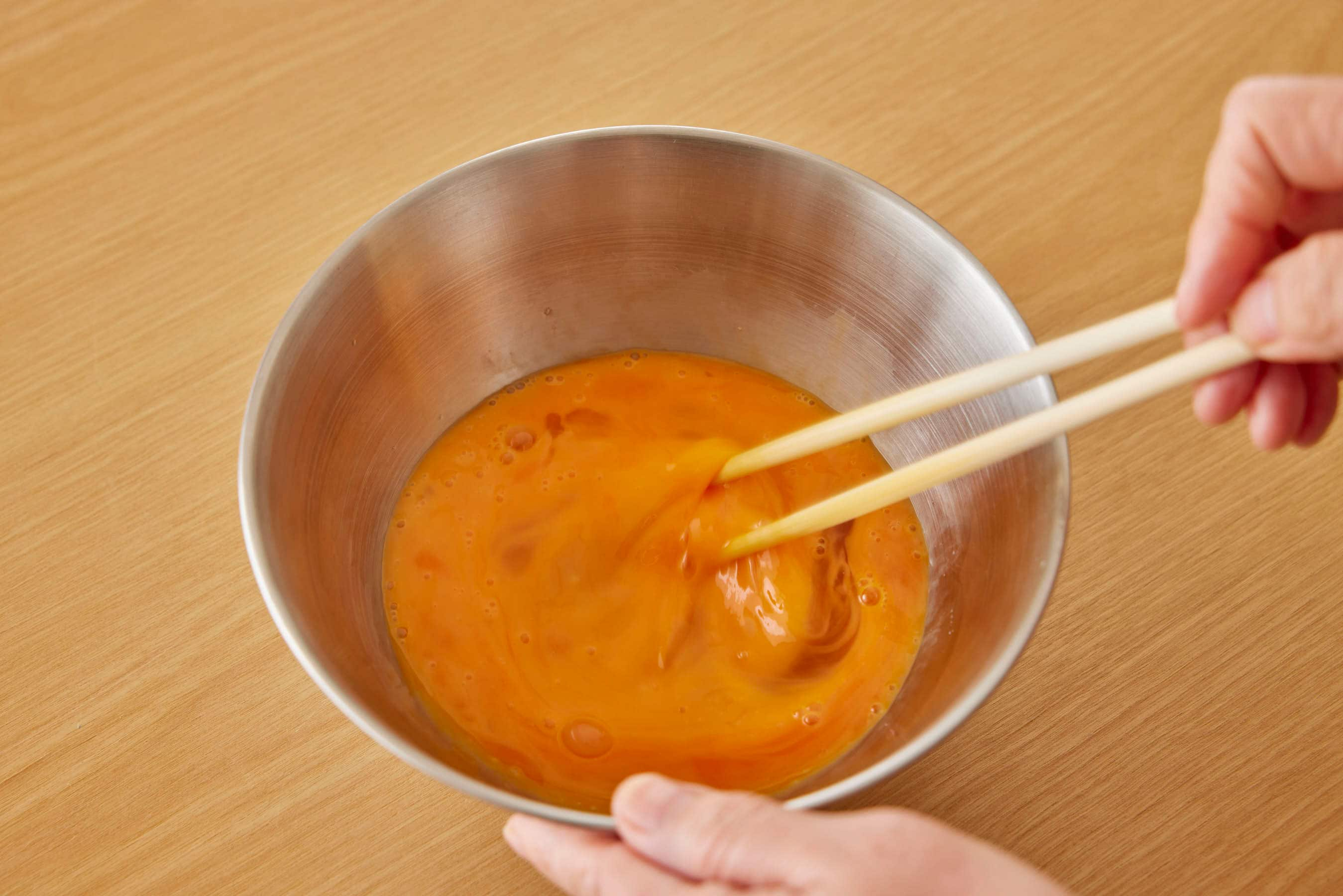
- 1Beat the eggs in a bowl.
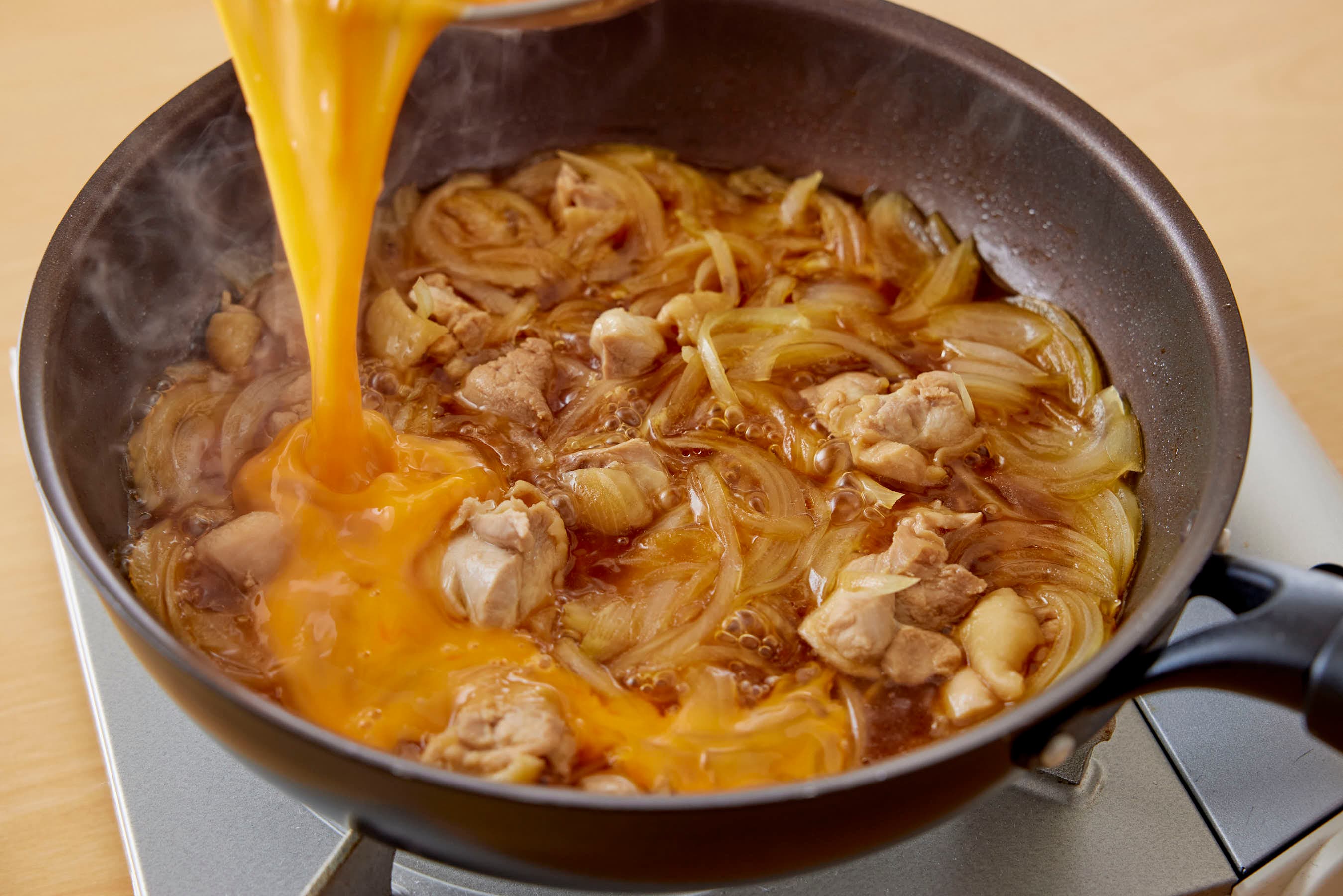
- 2Remove the lid from the fry pan and increase to medium-high heat. Once it’s boiling steadily, pour in two-thirds of the beaten eggs in a thin stream across the surface.
- TipsAdding the eggs while the liquid is boiling makes them fluff up nicely, so be sure it's fully boiling before pouring them in.
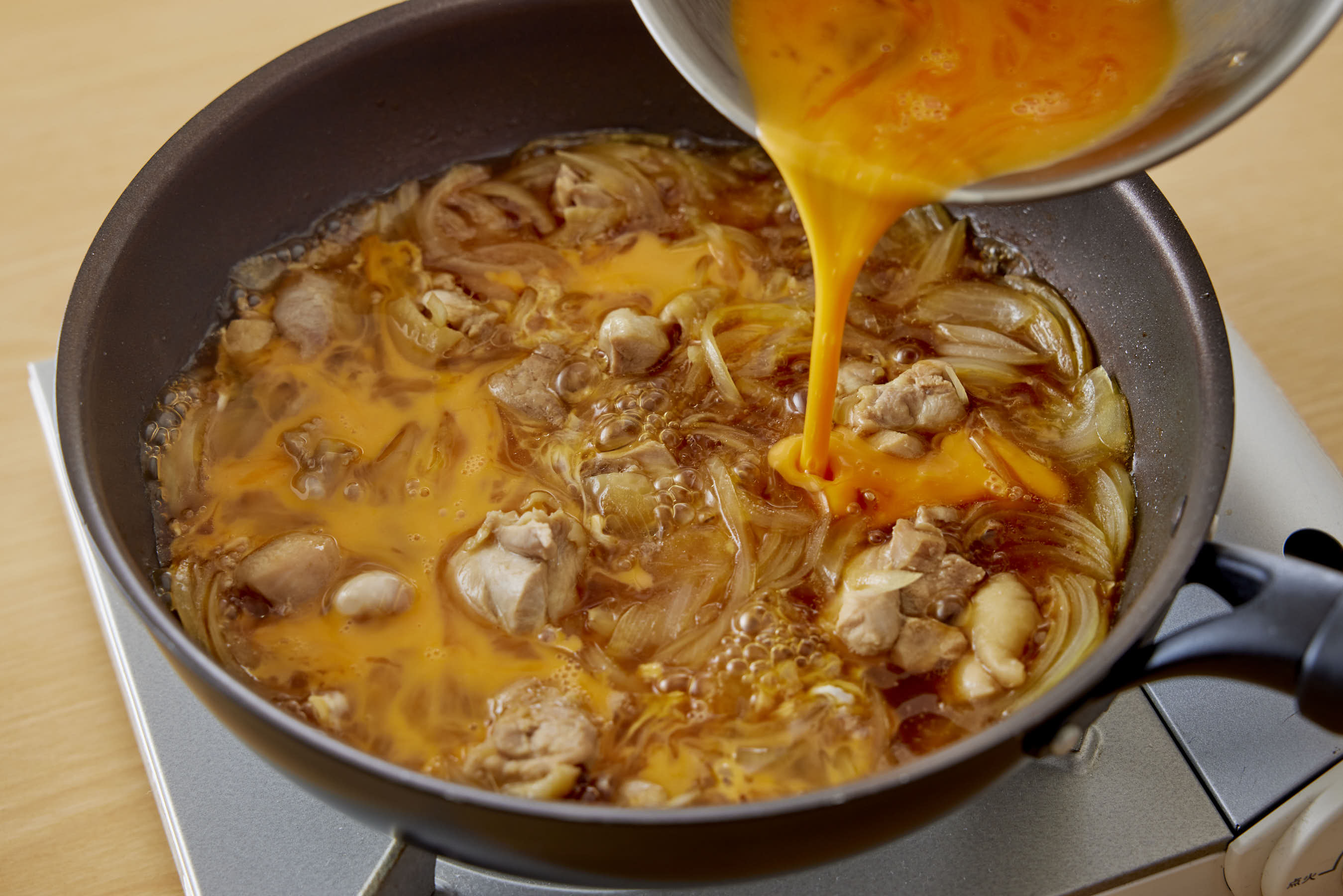
- 3Once the first portion of egg is mostly set, pour in the remaining beaten egg. When it reaches your preferred consistency, turn off the heat.
- TipsA dish where chicken is bound with egg is called “Oyako-ni”. When served over rice, it becomes “Oyako-don”.
Watch video for binding the ingredients with egg
How to Serve Oyakodon
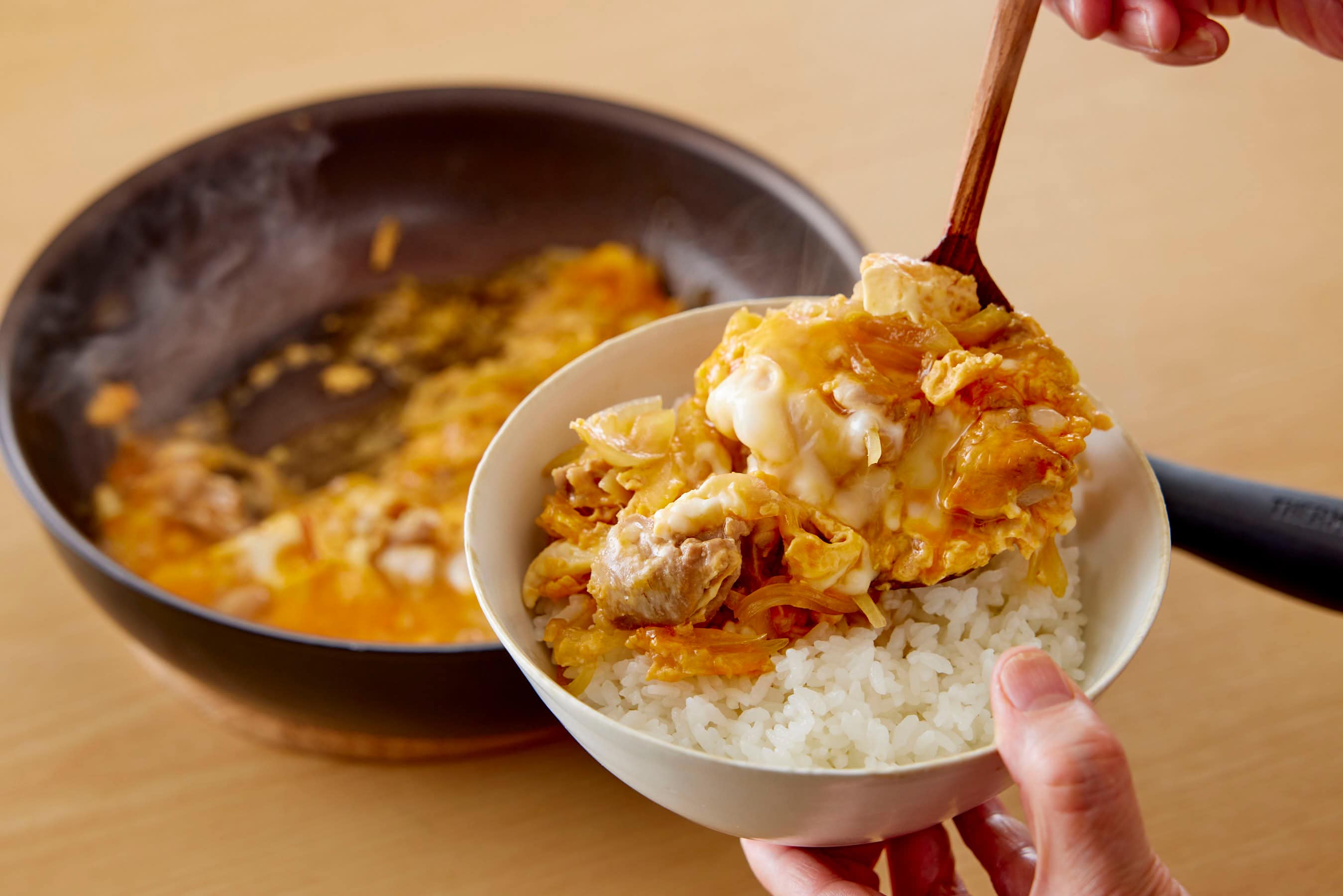
- 1Serve the Oyako-ni egg-and-chicken topping along with its broth atop the rice, then garnish it with the mitsuba (Japanese parsley).
Watch video for serving the Oyakodon
More Ways to Enjoy Oyakodon
Oyako-ni Bread Gratin (Gratin-style dish with chicken and egg “Oyako-ni”)
“Oyako-ni” (the simmered chicken and egg topping from Oyakodon) is placed on bread and baked. The sweet broth from the Oyako-ni soaks into the bread, while the saltiness of the cheese adds a perfect contrast. Feel free to adjust the amount of Oyako-ni to your preference.
Baked Potato with Oyako-ni Topping (Simmered chicken and egg)
Fluffy baked potatoes are topped with “Oyako-ni” and enjoyed together. The aroma of soy sauce enhances the flavor of the potatoes.
Japanese Cooking Tools Used in This Recipe
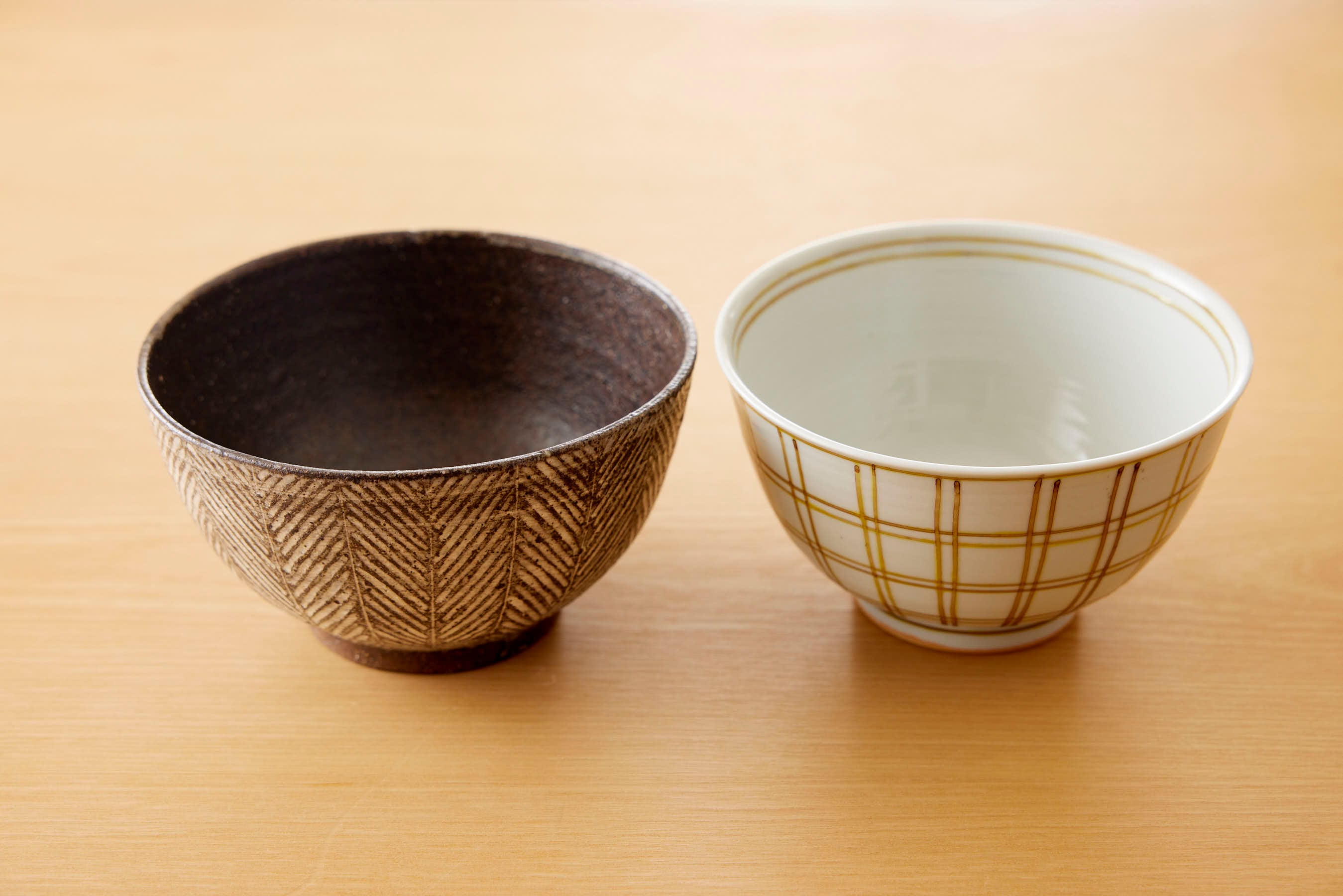
“Donburi” Bowl
“Donburi” originally refers to a thick-walled, slightly deep bowl, also called a “don” or “donbachi”. In the late Edo period (1603 - 1867), eateries began serving meals by placing rice and side dishes together in these bowls, which became popular. This gave rise to the dining style known as “donburi-mono” or “donburi-gohan”, where toppings are served over rice in a single bowl.
For more information about “Donburi”, please see our Glossary page.
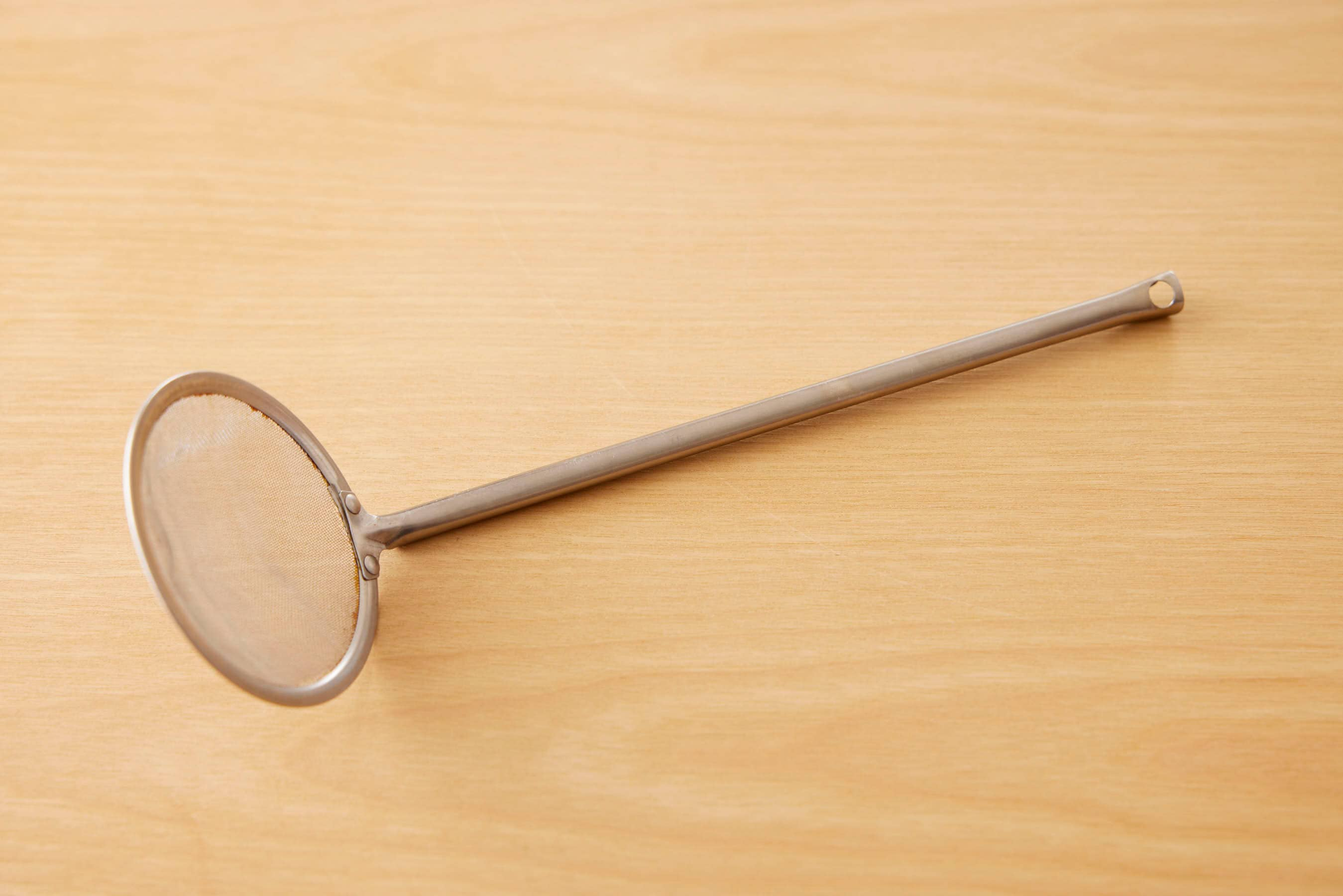
Akutori Ami / Mesh Skimmer
A tool used to remove the “aku” (foamy scum) that rises to the surface during simmering. While a spoon or ladle can also be used to skim, the Japanese-style akutori ami features a fine mesh that allows you to remove impurities more quickly and cleanly.
For more information about “Akutori Ami / Mesh Skimmer”, please see our Glossary page.
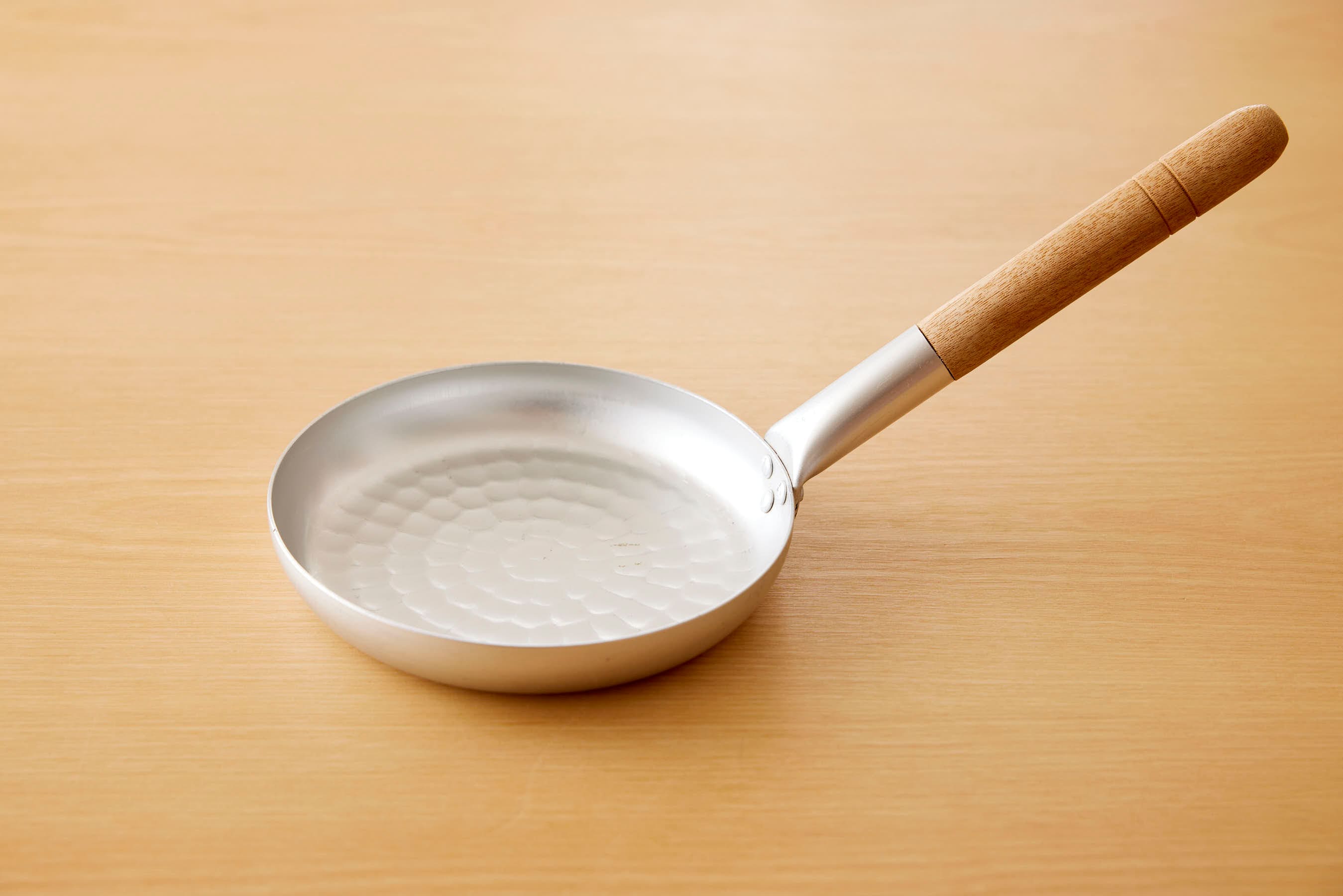
Oyako-nabe / Oyako Pan
This is a small pan used for dishes like Oyakodon or Katsudon, where ingredients are simmered and finished/bound with egg. It’s designed for preparing single servings and makes it easy to slide the topping directly onto a bowl of rice.
For more information about “Oyako-nabe / Oyako Pan”, please see our Glossary page.
Kikkoman Products Used in This Recipe
About the Recipe Author
Yuko Ihara
Having lived in England and the U.S., Yuko Ihara is well-versed in a wide range of culinary genres. As a culinary researcher, she creates dishes for magazines and books, develops corporate menus, and also engages in product development and food consulting. She introduces easy-to-follow tips on how to make delicious food at home, emphasizing the importance of seasonality and healthful eating. When travelling, she loves to search for delicious vegetables and ingredients.
Instagram: @iharayukoo
About Washoku Lesson
Washoku Lesson is special content offering detailed and easy-to-understand explanations, including tips for making classic Japanese dishes as well as the many ways of enjoying these, and introductions to special Japanese cooking utensils and annual events.
Related Recipes
15min
466kcal
2100mg
4min
210kcal
1000mg


